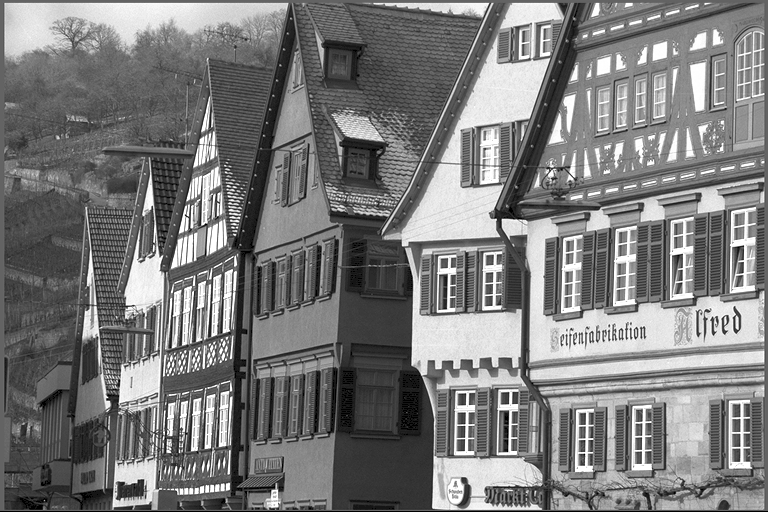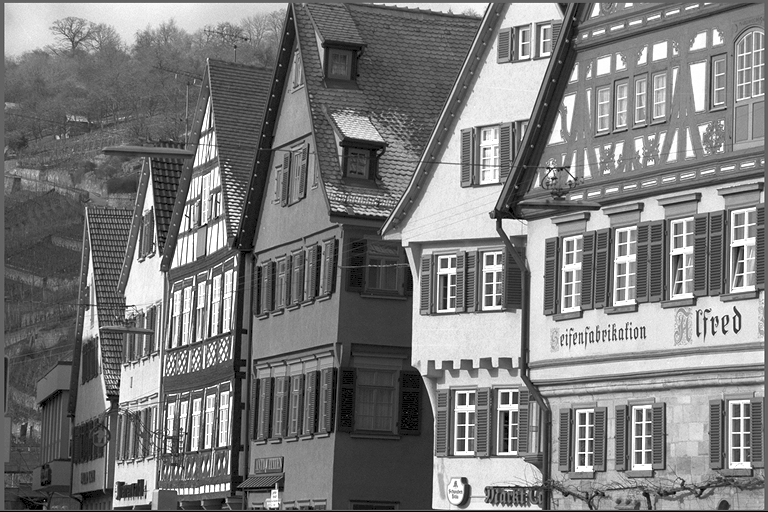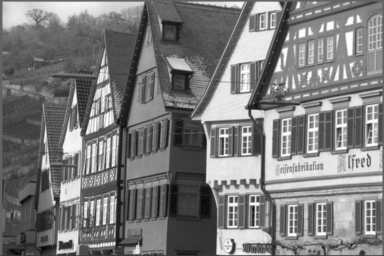Overview
Gaussian pyramid generator takes one input image and fills the output image pyramid with downscaled versions of the input.
| Input | Output |
|---|---|
 |     |
Implementation
The function is implemented by generating the Gaussian pyramid from the base (level 0) to coarser levels.
If the input image actually wraps the first level of the image pyramid, nothing is done for this level. If not, the input image contents will be copied to the first image pyramid level.
The coarser levels are generated by taking the previous level, convolving it using a clamp boundary condition with the following kernel:
\[ k = \begin{bmatrix} 1 \\ 4 \\ 6 \\ 4 \\ 1 \end{bmatrix} \cdot \begin{bmatrix} 1 & 4 & 6 & 4 & 1 \end{bmatrix} \]
Because only 2x downscaling is supported, the result is then downsampled by keeping all pixels with even coordinates.
The algorithm repeats until all levels are generated.
Usage
- Initialization phase
- Include the header that defines the Gaussian pyramid generator function. #include <vpi/algo/GaussianPyramid.h>
- Define the input image object. VPIImage input = /*...*/;
- Create the output pyramid with the desired number of levels (4) and scale factor (0.5). It gets its dimensions and format from the input image. uint32_t w, h;vpiImageGetSize(input, &w, &h);VPIImageFormat type;vpiImageGetType(input, &type);VPIPyramid output;vpiPyramidCreate(w, h, type, 4, 0.5, 0, &output);
- Create the stream where the algorithm will be submitted for execution. VPIStream stream;vpiStreamCreate(0, &stream);
- Include the header that defines the Gaussian pyramid generator function.
- Processing phase
- Submit the algorithm to the stream, along with the input image and output pyramid. It'll be executed by the CPU backend. vpiSubmitGaussianPyramidGenerator(stream, VPI_BACKEND_CPU, input, output);
- Optionally, wait until the processing is done. vpiStreamSync(stream);
- Submit the algorithm to the stream, along with the input image and output pyramid. It'll be executed by the CPU backend.
- Cleanup phase
- Free resources held by the stream, the input image and the output pyramid.
For more details, consult the Gaussian Pyramid API reference.
Limitations and Constraints
Constraints for specific backends supersede the ones specified for all backends.
All Backends
- Input image and output pyramid must have the same image type
- Input image and pyramid's base level must have same dimensions
- Only scale=0.5 is supported (i.e. only dyadic pyramids can be generated)
- The following image formats are accepted:
PVA
- Only available on Jetson Xavier devices.
- Every pyramid level's dimension must be at least 65x65 big.
- The following image formats are the only ones accepted:
- Pyramid must have at most 10 levels.
VIC
- Not supported.
Performance
For information on how to use the performance table below, see Algorithm Performance Tables.
Before comparing measurements, consult Comparing Algorithm Elapsed Times.
For further information on how performance was benchmarked, see Performance Measurement.